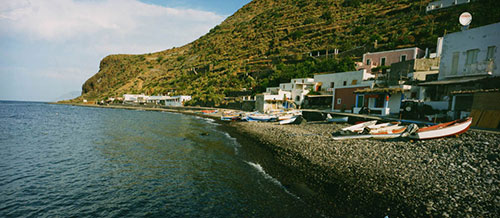
|
The island of Filicudi has an oval shape, on a major axis five kilometers long and three km wide; it is a large volcanic system made of three extinct eruptive cones: Fossa delle Felci, Montagnola and Torione.
The ancient name “Phoenicusa” is probably due to the ferns that covered the territory. It seems that the island was inhabited since the Upper Neolithic, around 3,000 BC. At the beginning of the Bronze Age, perhaps even before the end of the third millennium, a large settlement was built in the island, one of the largest prehistoric settlements of the Aeolian Islands (Piana del Porto – Casa Lopes). Some centuries later, in the early second millennium BC, the village moved from the seashore to the summit of Montagnola of Capo Graziano. After the conquest of the islands, the village was destroyed and the whole island of Filicudi was deserted for centuries. Then, it was inhabited again in the Greek period and archaeological remains witness the presence of the Romans and the Christian Byzantines. At Capo Graziano, the remains of a village of huts were found, dating back to the Bronze Age; in the natural caves at Montagnola there are interesting archaeological finds from ancient tombs and other interesting remains have been found at Piano del Porto. |


